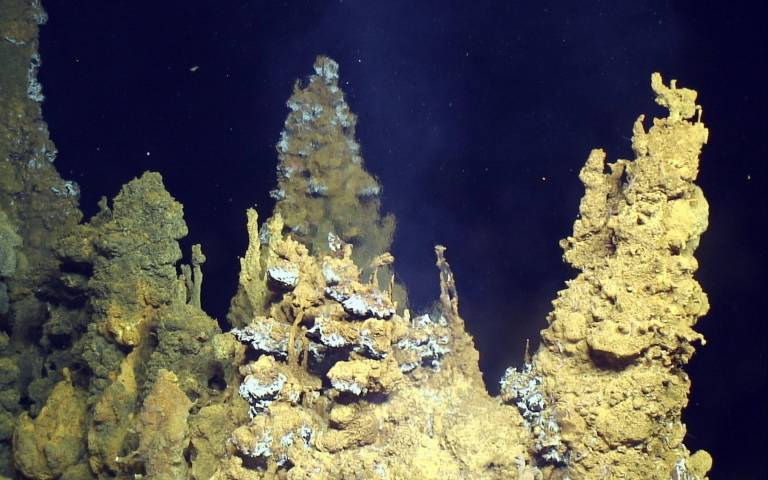Marine Geology

Deep Sea Vents
Deep sea vents, also known as hydrothermal vents, are fissures on the ocean floor that emit heated, mineral-rich water, supporting unique ecosystems independent of sunlight.

Deep-sea hydrothermal vent
A deep-sea hydrothermal vent is a seafloor hot spring formed where seawater circulates through oceanic crust, is heated and chemically modified, and re-emerges at temperatures that can exceed 400 °C under high pressure. First observed near the Galápagos Rift in 1977, these systems occur at mid-ocean ridges, volcanic arcs, and back-arc basins and sustain unique chemosynthesis-based ecosystems independent of sunlight.

Hydrothermal vent
A hydrothermal vent is a seafloor hot spring where seawater circulates through the oceanic crust, becomes heated and chemically altered by underlying magma, and reemerges carrying dissolved minerals that precipitate to form chimney-like structures. These sites, common along mid-ocean ridges and back-arc basins, host dense deep-sea ecosystems based on chemosynthesis rather than sunlight, and are central to studies of geochemistry, mineral deposition, and the origins of life.